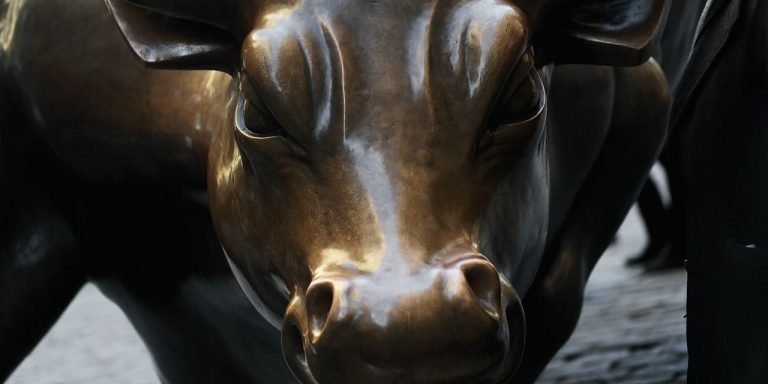
Textual content measurement

Bull markets for shares have tended to start when earnings have been nonetheless falling as a results of a recession.
Chris Hondros/Getty Photos
Shares have been dropping, but when that is the start of a longer-term correction, which will really bode properly for a sustained bull market.
The
S&P 500
is down greater than 3% since hitting an all-time excessive Might 7, whereas the
Nasdaq Composite
has dropped much more. Traders are worrying about whether or not excessive inflation will immediate the Federal Reserve to extend rates of interest sooner than anticipated—a shift that might make bonds extra interesting relative to shares.
Wednesday’s consumer-price-index knowledge, displaying costs rose a lot sooner than anticipated in April, added to these issues. It could possibly be serving to to put the groundwork for a cooling off in shares that might match the sample of previous long-term rallies.
“Most bull markets of the final 40 years commenced when firm fundamentals and earnings have been nonetheless declining from a recession,” wrote Jim Paulsen, chief funding strategist at Leuthold Group. “As soon as confidence a couple of new financial restoration emerges, inventory valuations are sometimes stretched even farther by an increase in bond yields. Consequently, throughout the first 12–24 months, a brand new bull cycle often experiences a interval of hesitancy, a pause, or a correction.”
The market’s restoration from the pandemic-induced recession has adopted that sample.
When the S&P 500 started its ascent in late March of 2020, earnings have been nonetheless bottoming out. FactSet knowledge present that for corporations within the index, the common ratio of inventory value to per-share earnings anticipated for the approaching 12 months ballooned to greater than 23 occasions from lower than 15 occasions. Whilst income have been falling, traders have been shopping for shares in anticipation of higher occasions and better company income.
Now, that earnings development has arrived, and the common ratio of costs to earnings is slightly below 21 occasions. Bond yields are rising, making proudly owning shares even much less enticing, which might trigger the a number of to fall nonetheless extra.
“A REVAL [revaluation] is more likely to construct a footing that extends the length and supreme success of this bull market,” Paulsen stated. Historical past confirms that this sample is regular.
The lengthy bull market that started within the early Nineties is an instance. The S&P 500’s a number of rose from below 15 occasions in 1990, when a recession started, to nearly 25 occasions in 1993, when earnings had collapsed on account of the slowdown and shares have been rallying in anticipation of a restoration. By early 1995, it had fallen again to round 17 occasions as income rose and shares’ positive factors slowed.
Shares continued rising for a number of extra years. A poor efficiency for shares this 12 months can be no shock, nevertheless it wouldn’t essentially imply the run is over.
Write to Jacob Sonenshine at jacob.sonenshine@barrons.com